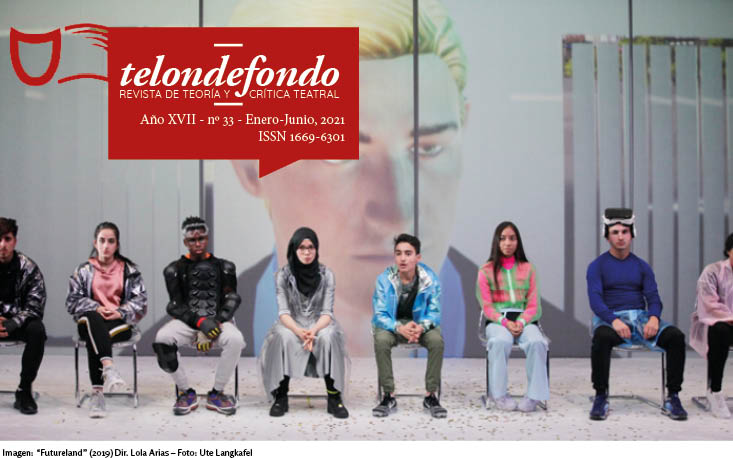"Ethica. Natura e origine della mente": a performance that suspends and triangulates light / body / mind
Abstract
That performance by Castellucci I participated in along with many other people back in 2019 sounds awkward today, as this pandemic present connects times. And "Ethica. Natura e origine della mente" demands thinking —from the viewpoint of Spinoza, Romeo and Claudia Castellucci— by placing ourselves in our time of interruptions and ceasing of usual movements. In this work of connections, I will try not to give in to the seriousness of the philosophical topic nor the incomprehension of certain signifiers, or the difficulty posed by the allegories that Romeo Castellucci mentions in interviews. This performance challenges us; it seems it would have anticipated the unusual experience of our bodies, which have been “hanging” for over a year in the vast world territory, swinging between listening to the language, to the howl, looking at the electric light, its blinks in the virtuality of screens, and feeling the ferocious animality of certain interactions. It is appealing to articulate the performance with the translation of the figures of the Light and the Camera, triangulating it with our uncertainties between life and death. “If the human body has been affected once by two or more bodies simultaneously, when the mind later imagines one of them, it will immediately remember the others” (Spinoza, Ethics, II, 2020: 133. Text in italics).Downloads
Copyright (c) 2021 telondefondo. Revista de Teoría y Crítica Teatral

This work is licensed under a Creative Commons Attribution-ShareAlike 4.0 International License.
Los autores/as que publiquen en esta revista aceptan las siguientes condiciones:
-
Los autores/as [traductores] conservan los derechos de autor y ceden a la revista el derecho de la primera publicación, con el trabajo registrado con Licencia Creative Commons Atribución-NoComercial-CompartirIgual 4.0 Internacional, que permite a terceros utilizar lo publicado siempre que mencionen la autoría del trabajo y a la primera publicación en esta revista.
-
Los autores/as pueden realizar otros acuerdos contractuales independientes y adicionales para la distribución no exclusiva de la versión del artículo publicado en esta revista (p. ej., incluirlo en un repositorio institucional o publicarlo en un libro) siempre que indiquen claramente que el trabajo se publicó por primera vez en esta revista.
-
Se permite y recomienda a los autores/as a publicar su trabajo en Internet (por ejemplo en páginas institucionales o personales).











